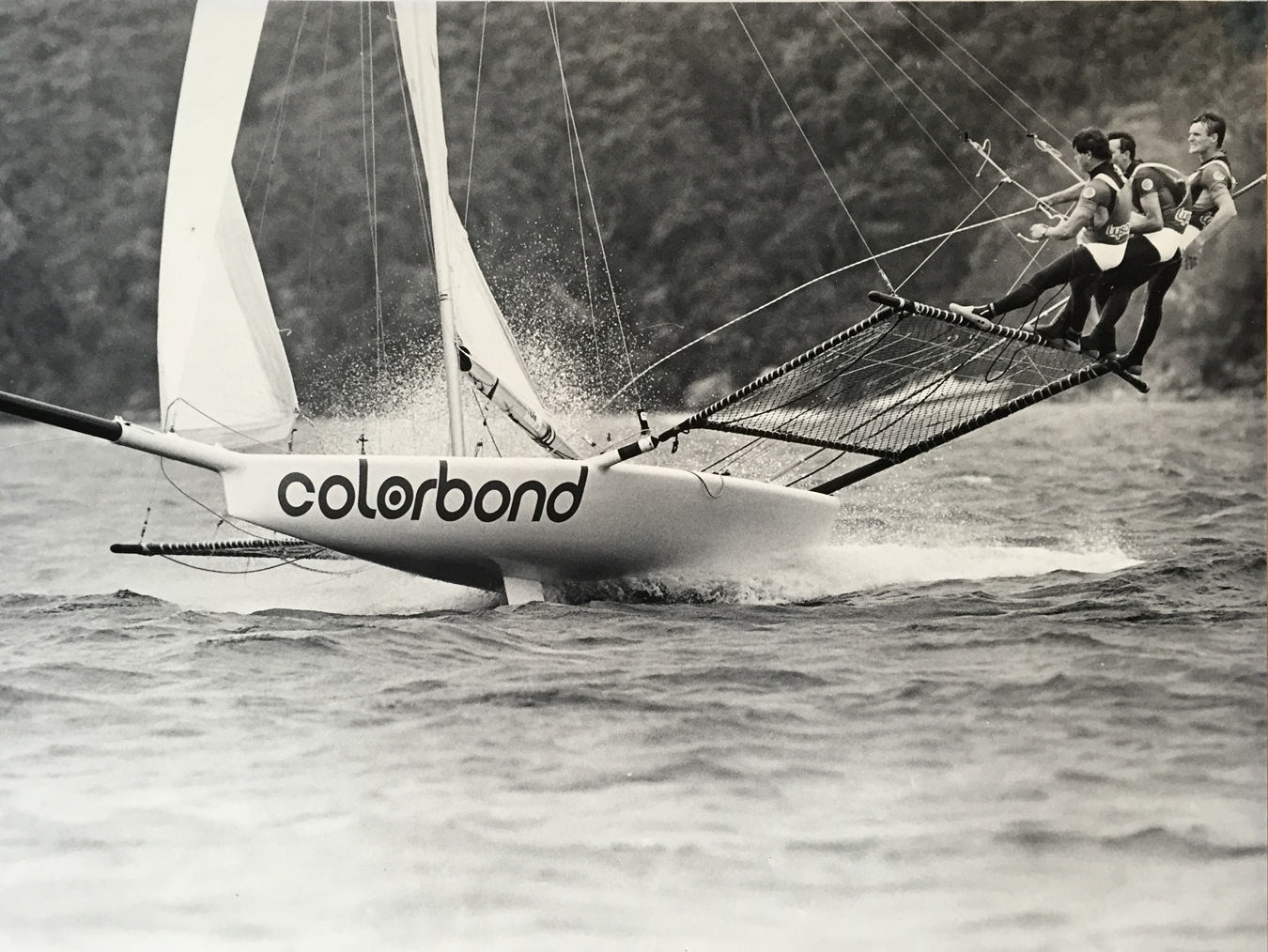It has been about a decade since Scott Jutson decamped from his hometown of Sydney for Vancouver. Jutson, an award-winning yacht designer who had made a name for himself in the cut-throat, competitive Australian racing community, traded one continent for another and elected to settle on the West Coast with his family, where he now operates Jutson Marine Design.
He recalls those heady days Down Under in the 1980s and ‘90s. “It was a buoyant time,” he says. “Australia had just won the America’s Cup, and there was a can-do, world-beating attitude down there.” Jutson had started out by designing high-performance racing sailboats, including much celebrated 18-foot skiffs that catered to what he describes as “a mad boat racing culture, all wildly out of control in the harbour.” The vessels soon increased in size and stature, with projects ranging from the first carbon monocoque harbour skiff (Colorbond 21) to True Blue, the remarkable, record-shattering 50-foot yacht built with David Adams, whose 1994 to ‘95 voyage shattered the BOC solo round the world record by 10 days. Perhaps his most celebrated design, the 79-foot maxi-yacht Brindabella, was first across the line in the ultra-challenging Sydney-to-Hobart race of ‘97, before embarking on a string of record-breaking wins. She remains one of the fastest in her class.
By the end of the 1990s, the demand for that style of vessel was drying up, says Jutson, who began to apply the values of macro design learned in crafting racing vessels to other areas. First came sailing catamarans, but eventually the designer transitioned to powered vessels. “Power boats are relatively crude,” he says. “You dial in engine size and so on. But racing sailboats are very refined, where even a minute tweak might result in two seconds a mile.” It may not sound like much, Jutson explains, “however, when you multiply that over the 640 miles between Sydney and Hobart, that’s enough for a margin of victory.” He says he was looking for a new direction—“one that truly appealed and would offer some positive reasons to exist.”
Luxury powered vessels are notorious for their large wakes, grotesque fuel consumption, and severe rolling and discomfort in rough seas, says Jutson—all challenges that he found highly appealing, and which acted as fodder for his quest in developing the ideal, powered catamaran hull and platform. He frames the design process as one of problem solving. “I deal with ideas that people have,” he explains. “Often they’re very experienced clients who really know what’s involved in long-distance cruising. And they understand what it takes for your family to be comfortable. I have to resolve those issues. And every project is different.” Jutson’s state-of-the-art catamaran hull and platforms more than address those key issues of ride quality and low wave-making, and yield significant improvements of fuel economy—so much so that commercial demand is also on the rise, especially given fuel savings that can amount to 25 per cent over conventional monohull designs.
One current project close to Jutson’s heart is the development of a prototype 50-passenger electric ferry to link West Vancouver with downtown. A similar design is already underway in Juneau, Alaska. Jutson says it’s past time we addressed our chronic congestion problem, and cites our ocean-side setting as part of an obvious solution now being ignored. “Unlike cities like London, New York, San Francisco, and Auckland, Vancouver stands out in its lack of water utilization as a transport link,” says the designer, who notes that the SeaBus taps only a small part of the potential. “I’d love to see a ferry cutting across the harbour. Even more so if it’s clean and electric.”
Jutson estimates the cost of such a ferry to be around $1 million, which he notes, in mass transit terms, is not a lot of money. “We have docks everywhere: the city owns a dock in Harbour Green which is just sitting there unused,” he says. “These kinds of ferries are not a big deal. They can be a small but efficient part of the solution.” As for pursuing his passion for sailing in local waters? “It’s not really the same,” Jutson politely understates, noting: “In Sydney, it’s almost inevitable you’ll be on a sailboat a couple of days a week.” But he does get a big chuckle that one of his earliest successes, from 1987, the 40-foot catamaran Dragonfly, has also moved to the Pacific Northwest. In fact, she convincingly won the Swiftsure International Yacht Race in 2000 and 2001—and continues to hold the record.
Read more from our Transportation section.










